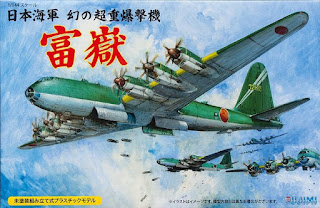David Walker has very kindly shared these images of his splendid 1/48 Nakajima Ki-84 Hayate 'Frank' model, made from the Hasegawa kit with some additional details and modifications. David wanted to find an unconventional scheme and after searching online chose a subject featured on
SuperScale Decal Sheet 48-526 for an aircraft attributed to the HQ Flight of 47 Hiko Sentai at Narimasu airfield, north-east of Tokyo, Japan during early 1945. SuperScale
presented an unusual mottled scheme with explicit colour call-outs of dark green blotches over grey-green which David followed directly, changing only the under surface colour to a medium grey.


David used the basic Hasegawa kit JT 67 (09067) but added 2 colour photo-etch and flap details from Eduard sets and a Fukuya brass pitot tube. He found the Eduard pilot seat a great improvement on the kit part K5 and found that it folded easily into place. He also followed his usual practice of replacing the kit engine - part B1 - with a Vector resin replacement, in this case the Homare Ha 45. This was not a perfect fit and required some minor alterations to the cowling but David felt it well worth it in improving the appearance of the model.


David also wanted to replace the cannon parts N8 with brass items but was unable to find anything suitable so settled for drilling out the barrels of the kit parts. He also drilled out the kit's stub exhausts and both air scoops in the upper cowling part B6. The upper surface base colour was painted with a mix of FS 34432 and 34082 with an over spray of dark green blotches according to the SuperScale instructions, then some light wear and tear was represented with a silver pencil. After completing the model David displayed it on a landscaped base.
David highly recommends the Hasegawa model to anyone but advises reinforcing the landing gear during the build as the poly caps are a "menace"! With special thanks to David for sharing the images and description of his model with Aviation of Japan.
Hiko No.47 Sentai
In February 1945 47 Hiko Sentai were in the process of re-equipping with Hayate from Shoki as part of the 10th Air Division at Narimasu which was staffed by the 43rd Airfield Battalion. Their use of Hayate in the air defence role against the B-29 was brief. After the US carrier attack on the 16th of that month they were immediately exempted from further air defence duties together with 244 Hiko Sentai and re-assigned under direct 6th Air Army command to escort a planned bomber attack against the enemy task force the next day. The bomber attack was cancelled but the urgent re-assignment had the effect of removing two fighter regiments from the 10th Air Division defence capability when USN fighter sweeps came in again on the 17th. In April 1945 the 47th were transferred to become part of the 30th Fighter Group together with 244 Hiko Sentai and 17 Independent Air Squadron. The 30th Fighter Group came directly under the General Defence Command as part of the Mobile Air Defence Forces with responsibility for escorting Special Attack units (18, 19, 25, 45 and 47 Shimbu Tai) tasked with annihilating enemy carrier task forces threatening the Kanto area. The unit was then moved to Sano airfield, south-west of Osaka. At the end of May it was moved further south to Miyakonojo west airfield on Kyushu to participate in the escort role for the Okinawa campaign, suffering such attrition that by mid-July when it was incorporated into the newly formed 12th Air Division it was officially described as "newly organised" and under strength. The unit ended the war at Ozuki under 12th Air Division command with about 23 Hayate on strength.
The 47th are one of the Army fighter units with 'moving' unit insignia colours with differing assertions of colour sequence and interpretation over the years. In his 1978 Koku Fan series Minoru Akimoto recorded the colour sequence in January 1944 when the unit was re-organised into Hikotai composition as blue for 1st (Asahi), red for 2nd (Fuji) and yellow for 3rd (Sakura), the same sequence recorded in the table in 'The Japanese Army Wings of the Second World War' (Bunrin-Do, 1972) and also as described in the more recent 2005 Gakken book on Hayate. However 'Japanese Army Air Force Fighter Units and their Aces 1931-1945' (Grub Street, 2002) shows a more conventional sequence of white, red and yellow for the three Hayate Chutai. There is the possibility that the colour sequence was changed when the unit re-equipped from the natural metal finish Ki-44 to the camouflaged Ki-84 but with photographs identifying the aircraft of Chutai/Hikotai leaders showing tonally unexpected insignia colours mystery abounds!
Image credits: All © 2017 David Walker













